| I was taught how to build bimini frames by an
expert a few years ago. Chuck Ruhl was building frames
for a shop in Kemah when I stopped by for a lesson.
Talk about low tech, I was surprised to find a plywood
round about 16” to 18” diameter was used
to bend the tubing and a piece of P.V.C. pipe was
the cheater bar.
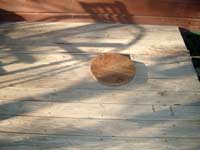 |
The basis is 2--3/4” plywood
rounds nailed together and then nailed to the
floor. The clamp for the tubing is built with
2 pieces of 2X4” drop, placed with a pipe
width spacing. |
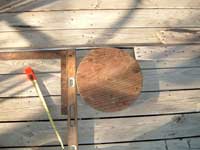 |
Once the decision is made on
the foot and top width and height, the pipe
is cut to length, and the “bend to”
mark can be placed. This allows all bends and
lengths to be the same. |
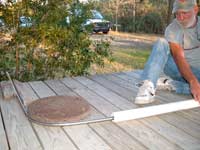 |
Slowly bend pipe with cheater
bar to the” bend to” mark. Start
the bending process as close to the round as
possible and move the cheater out when necessary. |
Each bend should end at the mark on the floor, this
mark can be moved for final adjustment, but the bends
should all end at the same place.
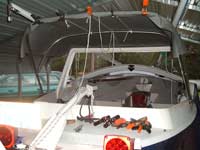 |
Two or three bow bimini frames
are easy to build. You can buy the ends, hinges
and all fittings from Duckworks |
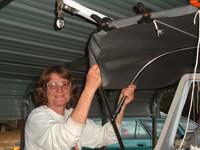 |
The layout and sewing of the
bimini cover is far beyond my ken and should
be left to a top hand. Actually this work is
easy to learn and if you jump right in you can
finish this project. |
It will take some fitting to get the canvas part
perfect, but it’s far from impossible.
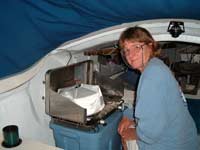 |
Happy camper safely tucked away
under her homemade bimini/tent. |

More articles by Lee Martin:
|